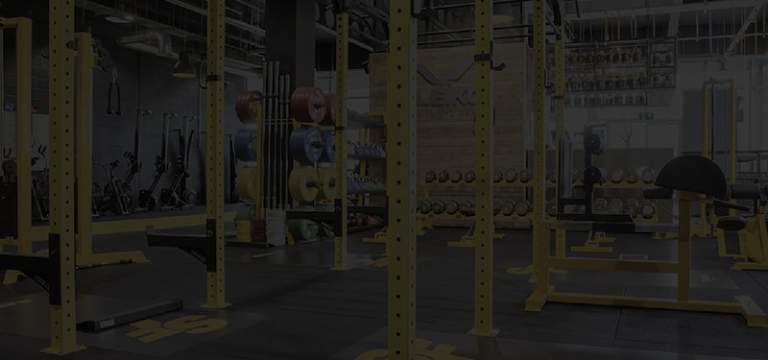If, like many people, you make the effort to go to the gym or head out for a run or bike ride, you are doing something that will not only help you control your weight but that may actually increase your lifespan, reduce your chances of suffering numerous chronic diseases and improve your overall quality of life. Good job – keep it up!
However, if you are putting in the effort, surely you want to get the best achievable results from your investment of time and sweat? You’d want the best return possible if you were investing money so why treat your workouts any differently?
Here are five useful tips for ensuring you get the best from each and every workout…
1. Fuel up
The human body is capable of performing incredible feats of strength and stamina – you only have to watch the London Marathon or World’s Strongest Man to see. However amazing your body might be, it is essentially a meat machine and like any machine, it operates best when it is properly fuelled. Exercise burns calories, often in the form of fat, but your muscles run on carbohydrates best. Before exercising, say two hours prior, consume a meal containing carbs, some protein and a little fat so you can do your workout without having to worry about fatiguing prematurely.
If you exercise early in the morning this might not be practical so consider blending a banana with some natural yogurt and peanut butter for an easy to digest pre-workout smoothie. While you can exercise on an empty stomach, you may find your workout is less intense or shorter than normal so many of the benefits will be lost. Fuel up and your workouts will be all the more effective.
2. Dress to impress
While exercise needn’t be a fashion show, you should dress according to the activity you are about to do. Running shoes are ideal for walking, jogging and running but are too soft for serious weight training and cycling and lack lateral support for aerobics classes. Weight training and minimalist shoes are great for getting under the heavy iron or low impact workouts but the lack of shock absorbency means that you need to take extra care if you run or jump in them.
That old favourite cotton t-shirt might fit like a well-worn glove but it will absorb all of your sweat and may prevent you from regulating your temperature effectively.
The golden rule for selecting exercise clothing is comfort – if you feel uncomfortable or self conscious in your workout wear, you won’t be able to give your workout your all.
3. Warm up properly
Warming up does two things – it prepares your body for the coming workout so you can perform at your best and reduces your chance of suffering an injury. Many people’s warm up consists of a few toe touches and nothing more which is completely inadequate.
A good warm up should include the following elements…
Pulse raiser – some light cardio to get your heart pumping and raise your temperature
Joint mobility exercises – to mobilize and lubricate your major joints e.g. shoulder rolls and shallow knee bends
Dynamic stretches – to stretch your muscles and prepare them for action e.g. leg swings and lunges
Ramp up – start your main workout with lighter weights or slow speeds and ease into your top work weight/speed gradually
Skipping your warm up may save you ten-minutes but could cost you weeks of missed workouts because you are injured. At the very least, your workout will be more productive if you warm up properly.
4. Cycle your workouts
If you always do what you have always done, you will always get what you have always got. While it’s okay to have a favourite workout, doing it over and over again will not improve your fitness very much. Once you have mastered a particular workout, it ceases to be productive and you need to raise the intensity, duration or difficulty to further improve your fitness levels. If, for example, you always run three miles in 30-minutes, you will only ever be three miles in 30-minutes fit. The same is true of doing 20 press ups. If you want to improve your fitness you need to periodically increase the difficulty of your workout. This is called cycling.
There are lots of things you can change about your workouts to make them more demanding and therefore more effective…
– Run faster or further
– Exercise more often
– Switch from running to cycling or rowing
– Try different types of group exercise class
– Increase the weights you are lifting or do more reps/sets
– Reduce the amount of rest between sets
– Choose more technically demanding exercises
– Don’t get stuck in an exercise rut – cycle your workouts!
5. Listen to your body
Many exercisers are slave to habit. They turn up to the same classes week after week, do the workout they have planned in advance or head out for a run simply because it is the day on which they always run. While such blind determination is admirable, it doesn’t take into account that, sometimes, your body isn’t really up to working out.
Dragging your body through a workout when you feel tired, unwell, sore, stressed or distracted can be counterproductive and actually take out more than you are putting in. For reasons too complex to discuss in this brief article but including hormonal fluctuations, sleep cycles and circadian rhythm, sometimes your body has an off day. You know when this is the case – you feel sluggish, unenthusiastic about exercising and your workout feels harder than it should.
Rather than slavishly follow your intended workout, listen to your body and take it easy for a day or two. While you may feel guilty about this, rest assured you will come back feeling stronger and more energetic as a result.
Remember, you are NOT a professional athlete – you are exercising for fun, fitness and health. A day off today could save you three days off next week because of an illness or injury that was otherwise avoidable. Listen to your body and take it easy when you need to.












131 Comments
Comments are closed.